

CONSERVATION IN TRANSFORMATION
NParks harnesses scientific advancements and technology for biodiversity and nature conservation. The opening of Rifle Range Nature Park, Singapore's first net positive energy nature park, is testament to its push for sustainability in line with the Singapore Green Plan 2030.
Night vision camera traps enable conservation officers to record and keep track of nocturnal species within our forests.
Strengthening
ecological
connectivity
An important aspect of biodiversity conservation is the strengthening of islandwide ecological connectivity. NParks’ work in this area is undergirded by scientific studies such as the Ecological Profiling Exercise (EPE) which helps identify ecological corridors used by wildlife as they move between green spaces. The results of the EPE helps NParks in planning our Nature Park Networks and integrating nature into our urban landscape.
Learn more about ecological connectivity.
ECOLOGICAL PROFILING TO IDENTIFY LEAST-RESISTANCE PATHWAYS
The Ecological Profiling Exercise uses least-resistance pathway modelling to identify and assign a numerical value to each surface structure (for example, a forest or a building) between core habitats. The lower the value, the less resistance an animal encounters in moving across it. By linking up structures of the lowest value, the model projects the least-resistance pathway that an animal is likely to use to travel between core habitats.
The model was applied to six target species that are under threat, and their pathways of least resistance were combined to produce an overall map of Singapore’s islandwide ecological connectivity.

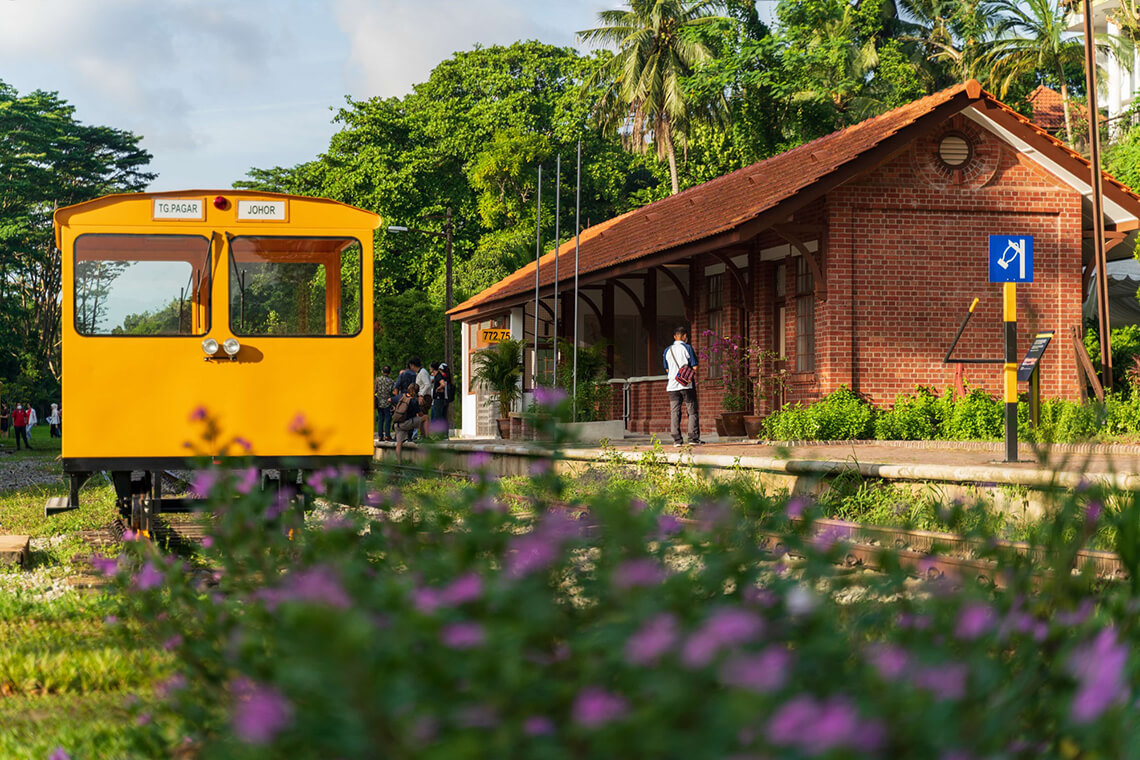
The Bukit Timah Railway Station community node, found along the Rail Corridor, retains the site's built and natural heritage. Interactive exhibits are housed within several preserved heritage buildings, giving visitors a glimpse into the history of the Station.
Nature Corridors
Four new nature corridors in northern, north-western and northeastern Singapore were identified based on the EPE findings. Among them is the Khatib Nature Corridor which will comprise forested sites at Springleaf, Tagore and Miltonia Close and along Lower Seletar Reservoir, and at the existing Springleaf Nature Park. Three new parks – Nee Soon Nature Park, Miltonia Nature Park and a park extension along Lower Seletar Reservoir – will be designated as stepping-stone habitats for the nature corridor.
Nature Ways
As part of its ongoing efforts to enhance ecological connectivity, NParks has completed 20 km of Nature Ways at Simei and Pandan, bringing the total coverage of Nature Ways to approximately 185 km. Rewilding work was also carried out at 10 sites across the island including the Upper Thomson Nature Way, South Buona Vista Road, and slopes along the Pan-Island Expressway (PIE) and Kranji Expressway (KJE).
Rail Corridor
With the opening of Rail Corridor (North), which stretches to Kranji MRT station, the Rail Corridor now provides over 21 km of continuous connectivity with over 30 access paths. Amenities were also enhanced with the opening of the Bukit Timah Railway Station community node which features a heritage gallery and a café housed in the restored railway station and Railway Staff Quarters
The Rail Corridor runs along the length of the former KTM rail line from Kranji MRT station to Spooner Road where sections of the train track have been preserved.
To monitor species diversity, participants from NParks’ Youth Stewards for Nature programme conducted biodiversity surveys along the Rail Corridor in early 2023. Their findings will be shared on the NParks website and incorporated into educational signs along the Rail Corridor to highlight the rich biodiversity in the area.
TACKLING AIR POLLUTION WITH NATURE
Closely-planted small trees and shrubs with overlapping canopies such as those found along Nature Ways can help reduce pedestrian exposure to airborne traffic pollution by up to 15%.
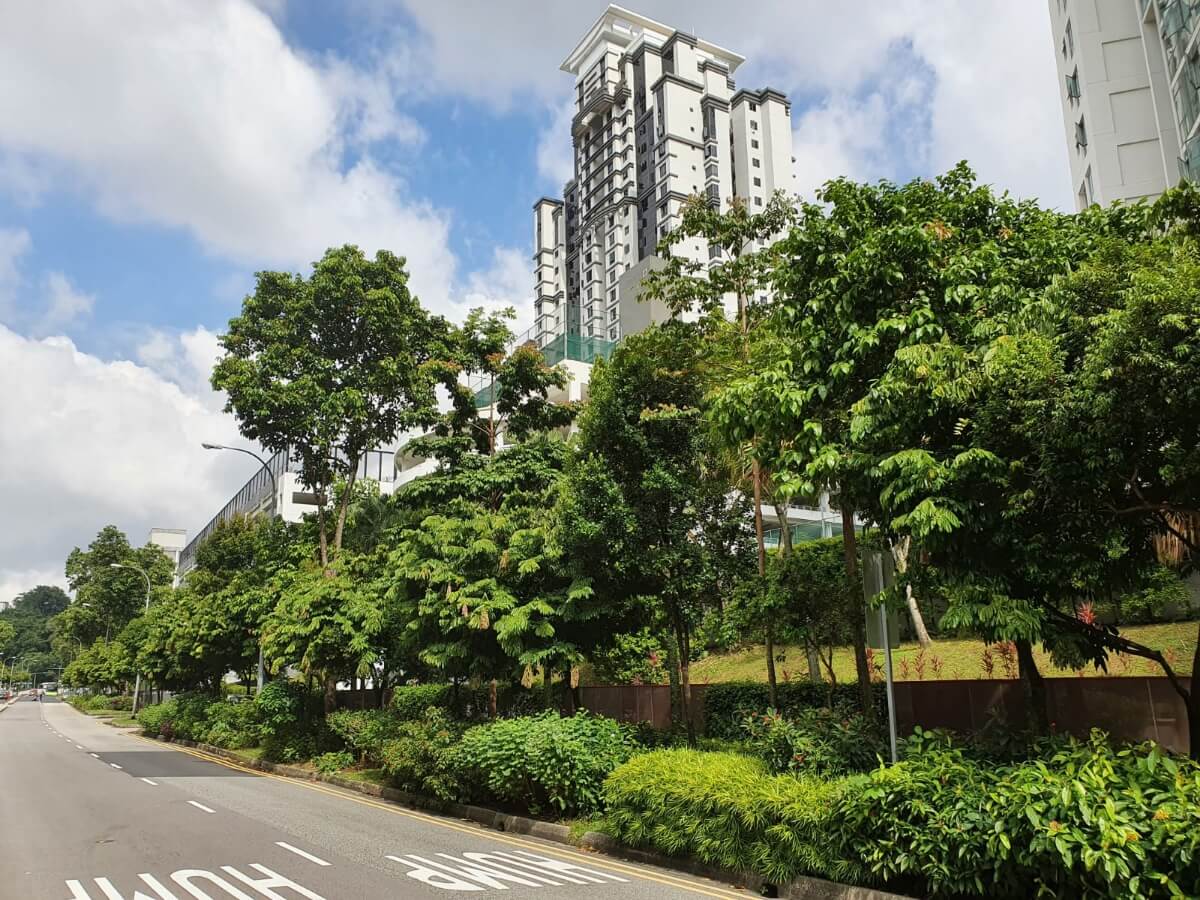
Multi-tiered plantings, such as these found along Tengah Nature Way have been found to improve air quality for pedestrians.
Restoring natural
ecosystems
As part of its ongoing biodiversity conservation efforts, NParks restored over 30 ha of forest, coastal and marine habitats as of March 2023, exceeding the initial target to do so by 2030. NParks announced in March 2023 that it will increase its target to 80 ha, which will contribute further to biodiversity conservation efforts.
In November 2022, NParks opened the new Rifle Range Nature Park, completing more than 370 ha of nature parks and 30 km of walking trails within the Central Nature Park Network around Bukit Timah Nature Reserve.
Nature parks aid in conservation efforts by offering alternative nature-based recreation options, reducing visitorship pressure on the Nature Reserves and providing complementary habitats for wildlife.
The secondary forests within Rifle Range Nature Park have also been sensitively enhanced as part of the Forest Restoration Action Plan. To guide these restoration efforts and the design of the nature park, a biodiversity baseline study was carried out to identify areas and species of conservation significance.
As part of NParks' efforts to naturalise urban gardens and parks, habitat enhancement works were also carried out in 28 parks and gardens in 2022, including neighbourhood parks such as Yishun Pond Park and Lorong Tanggam Park.
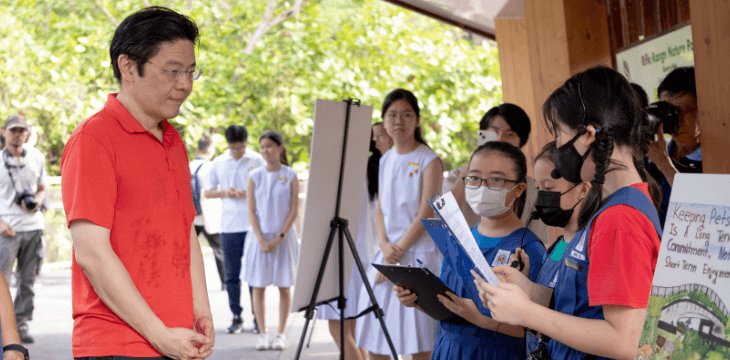
Deputy Prime Minister and Minister for Finance Lawrence Wong meets students from CHIJ Our Lady Queen of Peace to learn more about their project on 'Operation No Release', an educational campaign that aims to raise awareness of the dangers of releasing animals into the wild.
SINGAPORE’S FIRST NET POSITIVE ENERGY NATURE PARK
The 66 ha Rifle Range Nature Park is Singapore’s first net positive energy nature park. Energy harvested from the photovoltaic solar panels installed around the nature park exceeds the expected annual operational energy consumption of the site. The harvested energy also powers camera traps which have recorded rare fauna such as the Leopard Cat (Prionailurus bengalensis).
Watch a virtual tour of Rifle Range Nature Park.
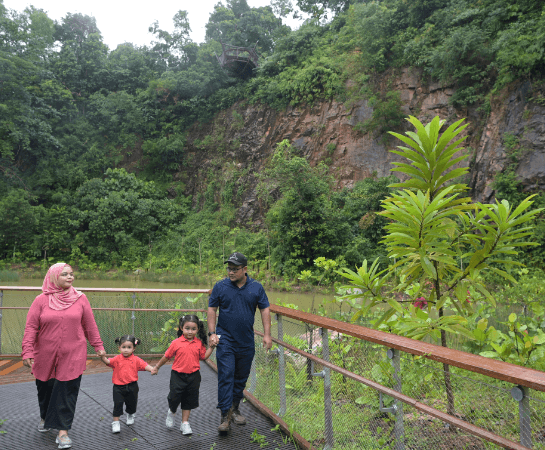
Developing energy-efficient parks are part of NParks' push for sustainability, in line with the Singapore Green Plan 2030 that guides the country’s sustainable development.
Conservation
efforts fly high
Local conservation efforts to strengthen the ecological resilience of biodiversity-rich habitats are bearing fruit.
Since April 2022, there have been increased sightings of several rare species of birds such as the Black-winged Flycatcher Shrike (Hemipus hirundinaceus), Lesser Green Leafbird (Chloropsis cyanopogon), Red Knot (Calidris canutus), Ruby-cheeked Sunbird (Chalcoparia singalensis) and Scarlet-breasted Flowerpecker (Prionochilus thoracicus) on Pulau Ubin.
The year also saw the first documented sighting of a wild Black-headed Ibis (Threskiornis melanocephalus) in Singapore, at the Sungei Buloh Wetland Reserve last November.
Such sightings highlight the Reserve’s significance as a stopover and wintering ground for migratory shorebirds along the East Asian-Australasian Flyway.
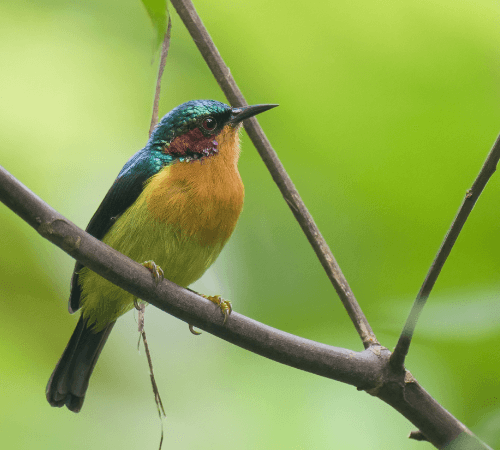
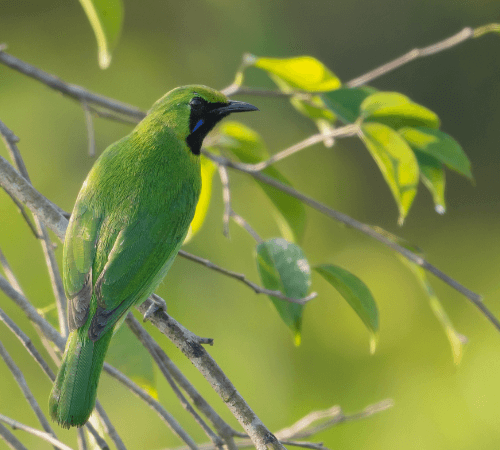
Bird watching remains highly popular, with enthusiasts spotting the Ruby-cheeked Sunbird (Chalcoparia singalensis) at least four times in the past year. The native and Critically Endangered Lesser Green Leafbird (Chloropsis cyanopogon) was recorded on Pulau Ubin for the first time since its last sighting in 2019.
In Pulau Ubin, 21 successful occurrences of the Blue-throated Bee-eater (Merops viridis) nesting were recorded after the disused Ketam Quarry was converted into a bird nesting area in 2016. The project was carried out together with Friends of Ubin Network members and the community and is part of efforts under NParks' Nature Conservation Masterplan.
IMPROVING UBIN WITH TECHNOLOGY
NParks is harnessing technology to improve the lives of villagers on Pulau Ubin. An example is the pilot deployment of personal alert buttons for elderly villagers who live alone. The project, a collaboration with the Government Technology Agency, makes it easier for these villagers to call for assistance in an emergency.
More villagers and businesses on Pulau Ubin will benefit from cleaner and more reliable electricity supply with an upgraded and expanded Pulau Ubin Micro-Grid. Supported by the Energy Market Authority (EMA), the micro-grid will feature a Solar Green Roof which can potentially meet 90% of the daily electricity demand in the Main Village using solar power. The system will also be extended to Kampong Sungei Durian, to benefit more villagers on the island.
Documenting
local biodiversity
In 2022, intact flowering specimens from the Sindora velutina tree were collected for the first time in Singapore. This is a critically endangered tree species that was presumed to be extinct on the island until it was rediscovered in 2019, and six mature tree specimens have since been recorded. The collection of fresh flowering specimens will help further research to support conservation efforts for the species
NParks has also completed the red listing for birds for the third edition of the Singapore Data Book which will guide its conservation efforts. A total of 413 bird species were recorded, with 24 species downlisted in terms of their threat status when compared to the previous edition.
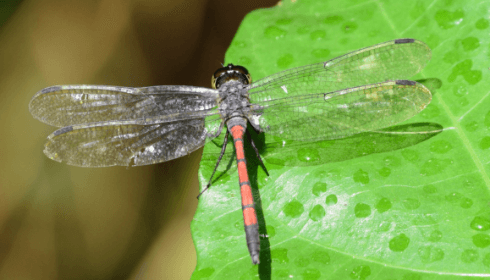
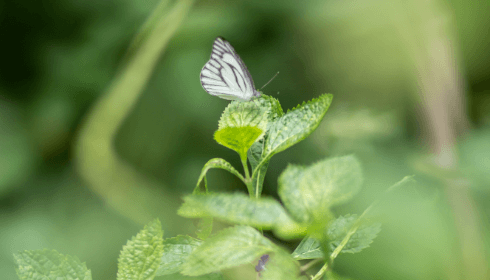
The Grenadier (Agrionoptera insignis) and Striped Albatross (Appias libythea olferna) are some of the resident biodiversity spotted in Singapore over the past year.
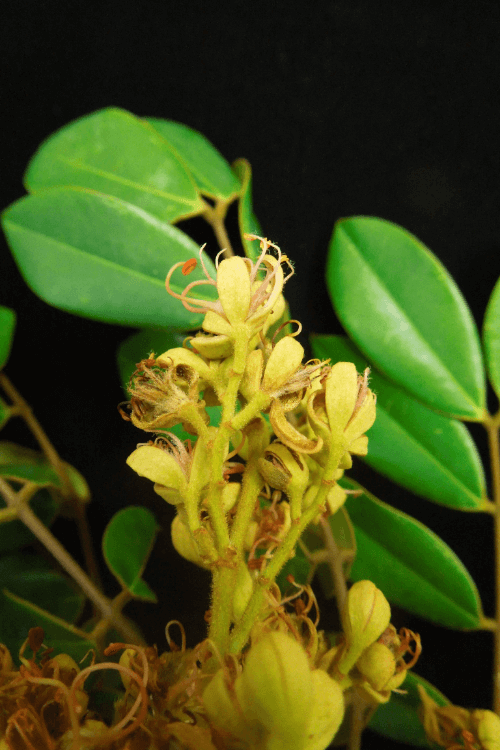
Specimens of the Sindora velutina were collected for researchers to observe and record its characteristics. Its DNA will also be extracted for genetic and taxonomic research. The specimen will then be preserved and stored in the Singapore Botanic Gardens Herbarium.
CITIZEN SCIENCE GUIDES URBAN GREENING STRATEGY
Equipped with simple scientific data collection methods and wildlife observation etiquette, citizen scientists under NParks' Community in Nature programme conduct biodiversity surveys throughout the year, documenting species of dragonflies, butterflies, garden birds and more. Data on garden bird populations around Singapore from five years of the Garden Bird Watch Programme were collated and analysed. The findings will guide NParks in their landscape design and rewilding strategies to attract a greater diversity of birds.
Community
contributes to
conservation efforts
A BioBlitz was organised from 27 to 28 August 2022 to survey the flora and fauna along Clementi Forest stream. This freshwater stream, which will be part of the upcoming Clementi Nature Trail, provides habitats for a variety of native odonates, freshwater fish and amphibians. The data collected will guide habitat enhancement efforts in the area, such as the choice of plant species to support aquatic biodiversity along its banks. BioBlitz is a Community in Nature initiative to involve citizen scientists in collecting information on Singapore’s biodiversity.
At the opening of the 11th edition of the Festival of Biodiversity in May 2022, NParks also announced new initiatives to strengthen conservation efforts. These included the publication of a new plant checklist and bibliography, setting up long-term study plots in the Central Catchment Nature Reserve, and an enhanced wildlife management framework to strengthen nature research while encouraging greater community stewardship.
This enhanced wildlife management framework, anchored by the community and backed by science, will focus efforts on cultivating greater public awareness and understanding of native biodiversity to better manage the community’s encounters with nature.
SOUND SOLUTIONS
NParks is working with the Tropical Marine Science Institute’s Acoustic Research Laboratory to develop an acoustic system for detecting both terrestrial and marine animals.
To date, several Dugong-like vocalisations have been recorded near Chek Jawa at Pulau Ubin. The system enables the collection of baseline data on marine megafauna such as local population sizes, visiting patterns, their activities in habitats and foraging behaviour. On the terrestrial front, the system is trained to recognise bird calls. By analysing the audio recordings, researchers will be able to estimate the locations and numbers of vocalising birds.
The system uses a novel technique to capture sounds from the environment and apply machine learning to process and identify the audio recordings, which helps in the formulation of conservation approaches.
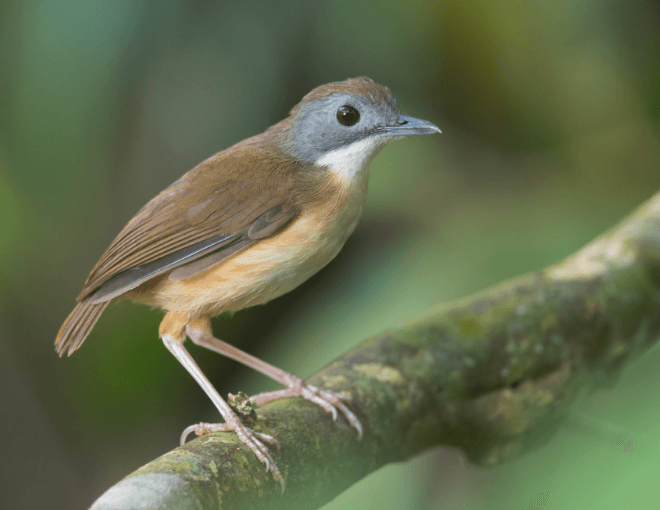
The nationally Vulnerable Short-tailed Babbler (Pellorneum malaccensis) is one of the birds whose call can be identified through the sound detection system.
Managing
local wildlife
populations
Technology plays an important role in wildlife management. NParks monitors the local macaque population to study their behaviour and track their movement and activity patterns. Individual macaques are microchipped and sterilised as part of efforts to manage their population islandwide.
NParks also works with the Otter Working Group and the community to monitor the otter population and movement patterns, and takes action to mitigate conflict especially in areas where the public may come into closer contact with otters. Some of these actions include raising awareness through outreach and signage, and erecting physical barriers.
In April 2022, “Our Wild Neighbours”, a multiple stakeholder initiative including NParks, Mandai Nature, ACRES, and the Otter Working Group was launched. The initiative aims is to foster a better understanding of Singapore’s wildlife and strengthen the science-based approach to wildlife conservation and management.
Take a look at some wildlife movements monitored by camera traps.
Curbing illegal
wildlife trade
On the global front, NParks is tackling the issue of illegal wildlife trade in partnership with the international community under the Convention on International Trade in Endangered Species of Wild Fauna and Flora (CITES). In June 2022, the Centre for Wildlife Forensics was recognised as a CITES-listed laboratory, a testament to Singapore’s expertise in wildlife forensic science and supporting the enforcement of CITES.
Later in the year, at the CITES Conference of Parties (CoP19) in Panama, Singapore partnered with Malaysia to spearhead proposals to uplist two songbird species – the Straw-headed Bulbul (Pycnonotus zeylanicus) and White-rumped Shama (Copsychus malabaricus) – which have been heavily poached and illegally traded in Southeast Asia. The proposals were subsequently adopted, with higher penalties on the illegal trade of these two species implemented.
NParks also advocated for amendments to Singapore’s Endangered Species (Import and Export) Act to include stiffer penalties for the illegal trade of endangered species, stronger enforcement powers for its officers, and greater clarity on the regulations.
As part of its enforcement efforts, NParks seized 34 kg of rhinoceros horns in October 2022. The 20 pieces of rhinoceros horns, valued at about S$1.2 million, were found in baggage bound for Laos, and was Singapore’s largest seizure of rhinoceros horns to date. As a major trading hub, Singapore plays a key role in intercepting such illegal movement of wildlife products.
USING TECH TO ENHANCE ROAD SAFETY FOR WILDLIFE
Another aspect of wildlife management is facilitating their safe movement. NParks’ Roadway Animal Detection System (RADS) helps enhance road safety for wildlife by detecting animals crossing the road and flashing warning signs, alerting motorists to slow down. The system is being deployed at Old Upper Thomson Road and Rifle Range Road.
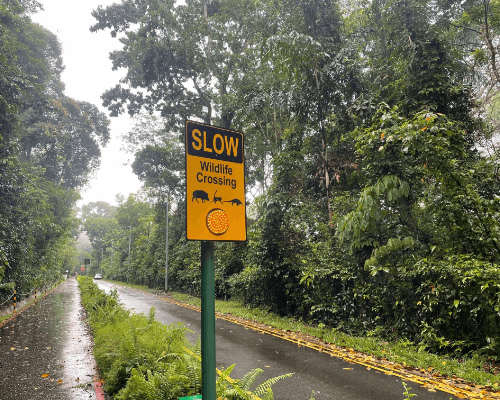

A scientist loads a batch of samples into the automated DNA extractor, QIAsymphony, which is designed to perform fully automated purification and extraction of DNA in an enclosed environment with minimal human intervention. This process allows the detection of illegally traded species from just a sample of its body part.
‘FIN’-TECH TACKLES ILLEGAL TRADE
Fin Finder is Asia’s first mobile application to visually identify illegally-traded shark and ray species using artificial intelligence. Launched by NParks, Microsoft and Conservation International, the app enables officers to take photos of fins and match them against a database of over 15,000 fin images via an AI-driven algorithm in the app to provide a visual identification within seconds. This empowers officers on site to flag suspicious fin shipments for further DNA testing.
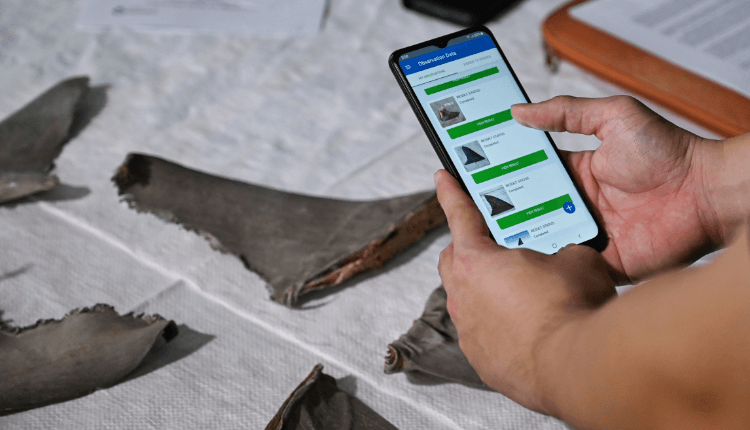
Take a closer look at how NParks and partners come together to tackle illegal wildlife trade.
Biosurveillance
for biosecurity
Illegal wildlife and pet trade are possible sources of introduction of exotic animal diseases such as rabies, which pose a danger to public and animal health in Singapore. NParks carries out biosurveillance to detect these threats and enforces strict biosecurity standards to prevent them from entering and spreading within the country.
In FY22, under the National Biosurveillance Framework, NParks detected, and subsequently investigated and responded to outbreaks of diseases including African Swine Fever in wild boars and imported pigs, and lumpy skin disease in a local cattle farm, and conducted vector surveys in pet establishments and parks to understand the ecology of vector-borne diseases.
Horizon scans of global and regional disease events were conducted together with risk assessments for early disease threat detection. To bolster knowledge building and research in biosecurity, NParks is collaborating with the National University of Singapore Saw Swee Hock School of Public Health on disease modelling and transmission studies.
The Animal and Veterinary Service (AVS) a cluster of NParks also plays a part in Singapore’s whole-of-government response to global health threats. It is co-lead for the Situational and Risk Assessment Report under the One Health framework, an internationally-recognised approach to achieving optimal health outcomes across the community, from people to animals and plants.
At the World One Health Congress, AVS presented on the topics of biosurveillance and programmes to combat rabies. AVS also conducted a rabies tabletop exercise as part of contingency preparedness. Maintaining high levels of biosecurity is key to safeguarding animal and public health. Singapore’s rabies-free status since 1953 is a testament to these efforts.
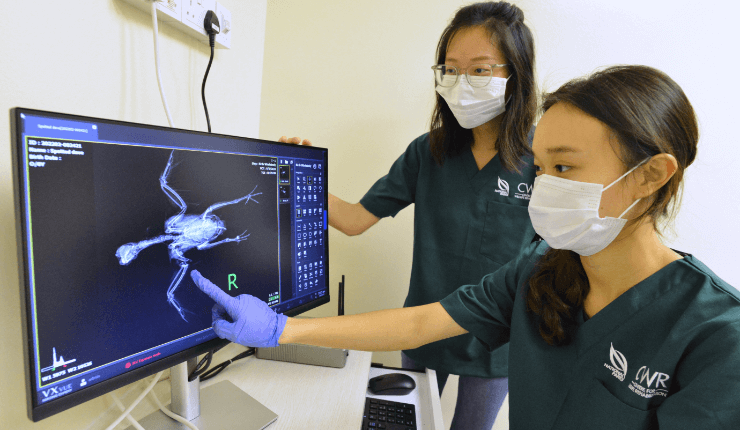
By analysing x-rays of animals, doctors can detect medical conditions such as pneumonia in wild animals. The process enables our vets to treat and rehabilitate these animals to prevent the spread of diseases.
BUILDING EXPERTISE IN eDNA
NParks has been refining its capabilities in the use of environmental DNA (eDNA) technology for the early detection of diseases. Scientists can detect both animal and their pathogen DNA signals through the collection of environmental samples such as air or water. At the 1st Australian and New Zealand Environmental DNA conference in February 2023, NParks gave a presentation on the successful utility of eDNA for the detection of Chelonid Herpesvirus 5, a disease-causing agent that infects all sea turtle species globally and was recently found in Singapore’s turtles as well.
Singapore’s expertise in global biosurveillance technology was recognised when an NParks study on optimising eDNA and eRNA (environmental Ribonucleic Acid) protocols for the simultaneous detection of several types of fish viruses from seawater was published in the Environmental DNA journal, a global comprehensive journal for environmental DNA research.
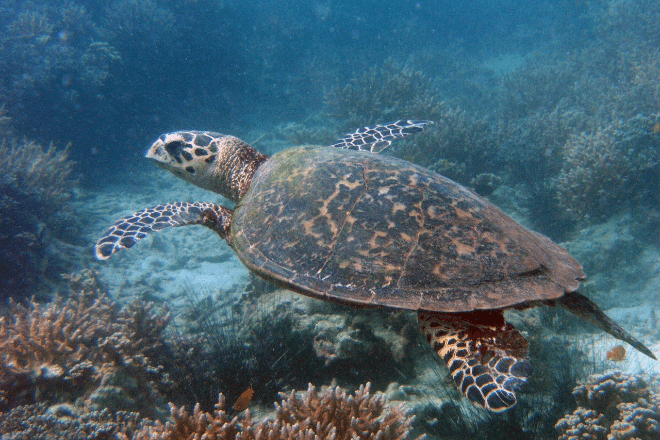
Technological advancements enable scientists to track potential environmental and disease threats to our critically endangered sea turtles, such as this Hawksbill Turtle (Eretmochelys imbricata).
Science drives
management of
pets & community
animals
Proper management of Singapore’s pet and community animal population is important in ensuring biosecurity and safeguarding public health while better protecting the well-being and welfare of these animals
An area that AVS is actively working on is the enforcement of strict breeding standards for dogs. From 1 April 2022, pet breeders and boarders will be required to abide by an improved set of licensing conditions that includes the prohibition of breeders from breeding pets with known harmful heritable conditions or carrying out in-breeding practices. To monitor this, genotyping identification is carried out during compliance inspection for parentage verification.
In September 2022, AVS launched a public consultation on its proposed framework to improve the management and welfare of cats. The proposed framework includes strategies for cat management, such as expanding the existing pet dog licensing and microchipping scheme to include pet cats, and extending the Trap-NeuterRehome/Release-Manage (TNRM) programme to community cats.
Another strategy in the management of pet and community animals is rehoming. In 2012, Project ADORE (Project on ADOption and REhoming of dogs) was launched to pave the way for local mixed-breed dogs to be rehomed in HDB flats. The criteria for the programme was expanded in June 2022 to include larger local mixed-breed dogs and K9 sniffer dogs. As of April 2022, the 10th anniversary of Project ADORE, more than 2,000 dogs have been rehomed under the programme.
Separately, the AVS volunteer programme is also gaining traction with members of the community getting involved in various pet-related programmes such as caring for rescued animals in the Jacob Ballas Animal Classroom and conducting talks and programmes for students on responsible pet ownership.
These opportunities empower the community in raising awareness and educating the young on the importance of responsibility to animals.
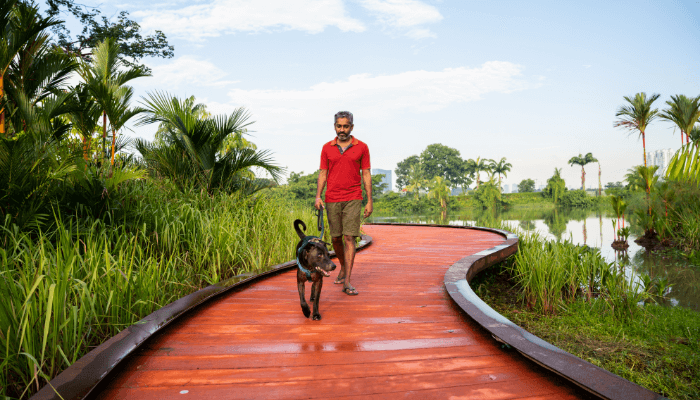
Responsible pet owners are pivotal to upholding Singapore's biosecurity through simple actions such as ensuring their pet's vaccinations are kept up to date.

Senior Minister of State, Ministry of Communications and Information & Ministry of National Development Tan Kiat How taking part in the online public survey for AVS' proposed cat management framework at Pets' Day Out.

The public consultation on AVS' proposed cat management framework is part of the larger Forward Singapore movement that aims to refresh our social compact and build a more endearing home.
ADOPTING TNRM TO MANAGE COMMUNITY ANIMALS
The TNRM programme is a holistic, humane, and science-based approach to community animal population management that is recognised by the World Organisation for Animal Health. Under AVS' TNRM initiative, community animals are sterilised to lower their reproduction rates before being released or rehabilitated and rehomed as pets.
Learn more about animal rehabilitation under the TNRM programme.